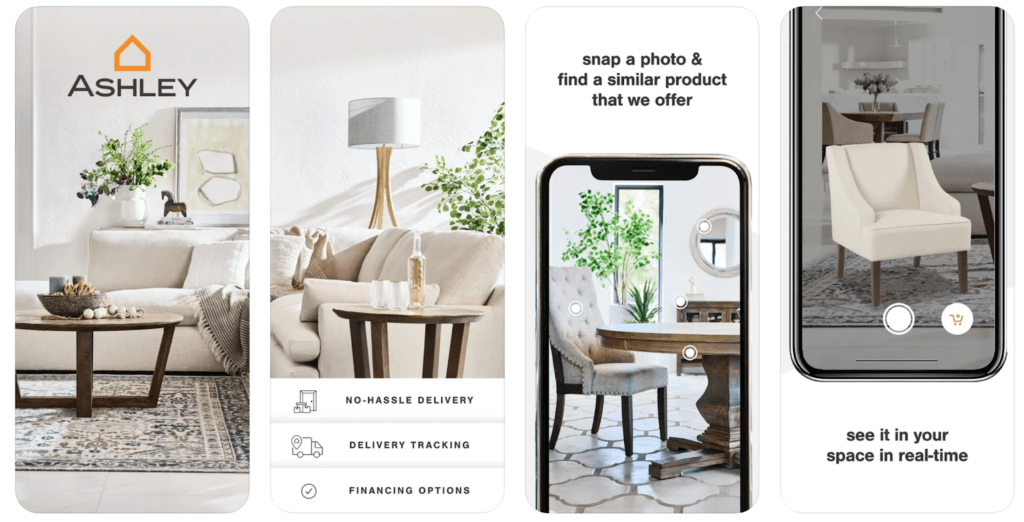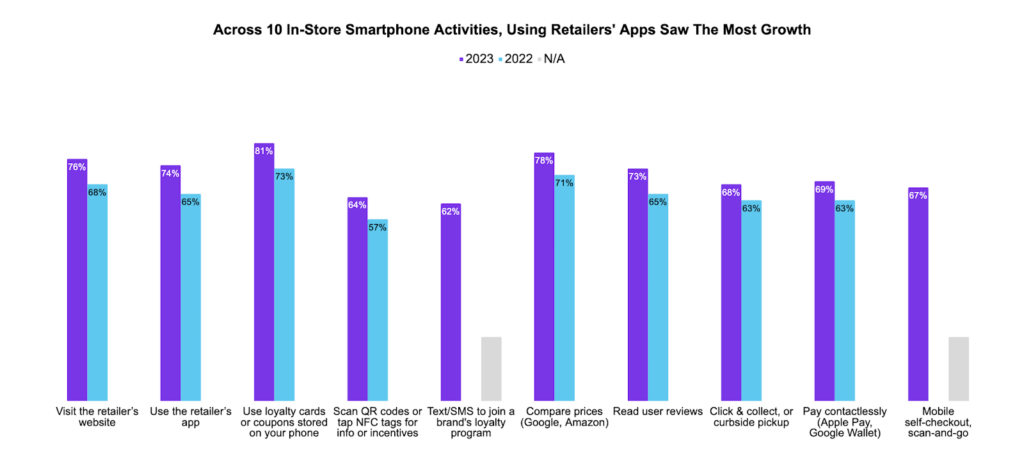Experiencing Ashley Furniture at MAU 2024

Emma Patterson Global Customer Marketing Lead

Share to my network
In this article
Categories
Book a meeting
Connect with our team of experts to discuss your conversion and loyalty goals, and how we can help you achieve them faster.
Get a demoMobile Apps Unlocked (MAU) Vegas is the premier event in the mobile app industry, connecting every app category under one roof. Held against a global backdrop of evolving consumer behaviors, preferences and regulators turning their attention toward mobile apps, MAU 2024 was not just a platform for showcasing cutting-edge technologies to accelerate value creation but also for deep discussions about connecting with customers.
Kicking off the retention track on Tuesday, Airship’s Head of Customer Marketing, Emma Patterson held a fireside chat with Ashley Furniture’s Sr. Director of Product, Gary David.
Mobile Innovations Grow Customer Value
First, they dove into the value of mobile app customers, highlighting industry research and quarterly earnings reports that show app customers are 3-4X more valuable to a brand than non-app customers. Gary David agreed that the more touchpoints a customer has with a brand — for communications, interactions and service — the more valuable they become. They highlighted the importance of activating customers through app authentication.
Ashley Furniture has been the number one home furnishings manufacturer in the world for almost 20 years, according to President and CEO Todd Wanek, and is “privileged to be a manufacturer in the United States Industry 4.0.” Industry 4.0 manufacturers are integrating new technologies, including Internet of Things (IoT), cloud computing and analytics, and AI and machine learning into their production facilities and throughout their operations.
David and Patterson discussed the future of the Ashley Furniture app following the launch of Apple’s Vision Pro, given that the company was an early adopter of AR and VR. As a product owner with more than a dozen mobile initiatives under him, David confirmed that the Ashley Furniture Team is committed to maximizing tech innovations to give customers what they want. While it’s not certain that Ashley Furniture will jump into the world of spatial computing, it’s something that David’s team is closely monitoring.
David also described his team’s approach to long-term engagement and loyalty. “It’s not just about meeting customer expectations one at a time — it’s a continuous effort,” he said. “Ashley Furniture wants to be as thoughtful as possible about the way that different generations interact with our brand and technology.”
Ease … Convenience
Patterson commented that consumers want ease of use and convenience, according to a consumer study released by Airship. This research dovetails with Ashley Furniture’s branding, which refers to its mobile app as a “simpler way to shop.” In practice, Ashley Furniture has incorporated technology that allows customers to visualize furniture in their own space before making the purchase.

Attention Is Fleeting
Patterson and David discussed one of the biggest challenges of mobile apps — the fact that 57% of users open an app just once or twice before deciding whether to delete it. This critical point in time is what we call the Activation phase of the customer app lifecycle — where you make it or break it in the first 30 days. The challenge is getting users back into the app so they can opt in, register and provide even minimal preference information. Ashley Furniture is increasing app opens by ensuring a good onboarding flow. This includes information about themselves and creating a mutual exchange of value upfront so customers understand how to get the most out of the Ashley Furniture app. That’s the prerequisite for further engagement.
Making the Habit Easier
Engagement is all about instilling a habit in the customer to use your app. Following activation, Ashley Furniture engages customers by leveraging cross-channel orchestration to connect with their customers no matter where they are. In an effort to bridge the gap between physical and digital, the brand looks ahead at the popular model of store mode to improve the customer in-store experience. “Understanding how customers want to shop is really the driving force. Building technology and services that are consumer-driven and improve our customers’ lives is what we’re all about.”
Ashley Furniture isn’t alone in its focus on bridging digital-to-physical customer journeys. Airship’s survey of 11,000 global consumers found that of all the ways shoppers use smartphones while shopping in physical stores, using the retailer’s app grew the most year over year, more than comparing prices, reading reviews or using the website, mobile coupons or loyalty cards.

It’s also important to realize that connecting customers’ journeys is more than bridging digital and physical experiences. A marketer might typically send a message that’s deep-linked to a particular page in the app — a product page, for example. But that’s where the bridge ends. It doesn’t have to. Imagine a social media-like Story within your app that marketers can create, deploy and iterate on their own to generate rich visual excitement about that big sale they just messaged. Or a holiday notification that drives customers to a preference center to indicate the 3 or 4 big areas on their shopping list: appliances, furniture, electronics, vacations, etc.
No-code tools now allow marketers to take charge of onboarding and feature adoption experiences, as well as opt-in flows and surveys for data collection, iterating and optimizing business outcomes and memorable experiences that customers will love to return to again and again.
Please reach out for help defining your mobile app strategy and optimizing cross-channel messages and native no-code app experiences. The whole Airship crew is ready, able and eager to help.